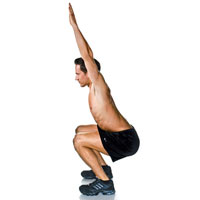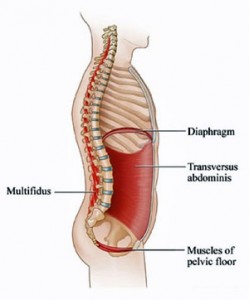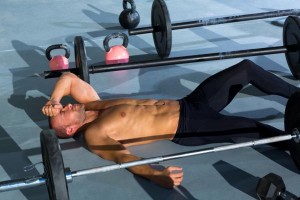Last week I shared 3 solutions for athletes looking to improve their athletic performance. If you haven’t read that post yet, I highly suggest you do before biting into this one. It can be viewed here.
Picking up where I left off, I have 3 more performance improving tactics for you. So let’s get to it.
1. Movement Competency

I know what you’re thinking, “What the heck does that mean?” Well let me explain. There are several fundamental human movements; squatting, hinging, pushing, pulling, twisting/rotating, lunging, running, jumping, etc. From the moment that we take our first steps, our body starts laying down a foundation and ingraining each movement into our brain. To help paint the picture, I’ll use a computer analogy: In our youth we begin “uploading” this movement software into the hard drive, (aka our brain) which we then recall upon as needed. However the software we acquired when we’re young isn’t always the best for our body—or optimal performance. In fact, repetition of poor movement patterns just reinforces a poor/weak foundation. So you can imagine why adding load onto a body that’s already not moving well is anything but ideal.
The key to improving athletic performance is rewriting your body’s programming. As humans we tend to move in a path of least resistance; and a movement that we’ve done repeatedly since we were young is a difficult pattern to break.
Think of it this way, you wouldn’t build a house on an uneven concrete foundation, because eventually it would lead to structural issues. In terms of athletic development, if you want to be stronger, move faster, and perform better you must work on your movement patterns so that your quality of movement doesn’t suffer when competing at your sport.This is why developing good movement patterns at a young age is crucial. Rectifying any issues you may have with your movement will not only allow you to train for peak performance, but also reduce your chance of injury and help you move better in daily life.
Long story short: Perfect your movement first, then add load. Far too often I see people adding load onto poor movement patterns; which only reinforces bad habits and puts those individuals at risk of injury. Remember, how well you move in the gym influences how well you move on whatever surface you’re competing on. So master your movements first.
2. Core Stability

When you think about your core, typically the first thing that comes to mind is your 6-pack muscles; aka your rectus abdominis. While your 6-pack muscles’ play a part in your core’s strength, there is another set of deeper core muscles that play an even bigger role. By definition core stability is the capacity of the deeper muscles in your torso to assist in the maintenance of good posture and balance; especially during movement. How does this translate to improved performance? A better question is how doesn’t it.
Increasing core stability can improve force transfer between the lower and upper body—which improves power in just about every athletic movement, i.e. the slap shot in hockey, the swinging of a baseball bat, the kicking of a soccer ball, etc. Increased core stability also allows for more efficient lower body movements, which enables you to change directions more rapidly. In terms of injury prevention, core stability improves lumbar (low back) stability, and can reduce the risk and symptoms of low back pain, not to mention your potential for injury.
For youth athletes in particular, poor core stability can be a recurring theme. Therefore, choosing exercises that help improve trunk stability are critical for developing athletic potential. Exercises like the goblet squat, front plank, side plank, bird-dog, bear crawl, and glute bridge are all movements that you can do practically anywhere. The issue isn’t that young athletes—and many athletes in general—are not performing these exercises, but rather that they’re not executing them with the proper technique; thus reinforcing poor movement patterns and building on a dysfunctional foundation.
If you want to improve your core stability so you can increase your performance, make sure that you’re doing your exercises properly; or have a strength coach watch and give you feedback while you perform them so that you can maximize your results.
3. Fatigue and Nutrition

I like to group these two components together because fatigue is often related to nutrition, or lack of. At the very basic level fatigue occurs because there’s an imbalance between energy input (food/water) versus energy output (calories burned/nutrients used). When physical activity is increased and there’s not enough intake of nutrients to accommodate the increase, imbalances occur which cause fatigue.
When I say, “fatigue” I’m not talking about that sleepy feeling you get on Monday mornings. I’m talking about real fatigue, or the extreme tiredness resulting from mental or physical exertion. It sucks, and has some pretty nasty effects on performance:
[list type=”4″]
- It decreases reaction time
- Affects judgement and mental clarity
- Decreases coordination
- Decreases strength and power production
- Decreases endurance capacity
- Increases risk of injury
[/list]
Fatigue is pretty much the worst for performance in every way. The good news is it’s preventable.
Evidence-based research has shown that athletes getting a consistent amount of sleep—equally approximately 10-hours per night—allows for improvements in reaction time, strength, and power production. So through a combination of adequate sleep and nutrition, you can improve your performance. How easy is it? Sleep more and you will perform better. It’s that simple.
For the most part, sleeping is the easiest component to modify; especially for young athletes who could literally hibernate through winter if allowed to. It’s the eating part that can get a bit tough.
In general, I think it’s fair to say most youth athletes are not focusing on what type of macronutrients they are eating, namely because they don’t know what macronutrients are. This is where you can run into problems, especially if an athlete is quite active in multiple sports. There are right and wrong ratios of macronutrients (proteins, fats, carbohydrates) depending on the sport(s) that you are playing. Micronutrients (vitamins and minerals) and water are also hugely important as they are necessary for muscle function and chemical reactions in our body, and should not be neglected; especially calcium, iron, and B vitamins.
While using a general nutrition guideline for your sport can be helpful, it’s not always effective. In addition to the sport, there are a number of other factors like age, gender, and body weight that must be considered. Not to mention that every athlete is unique in their own way. So if you really want to maximize your performance through your diet, seek out a registered dietitian or nutritionist that will provide you with a personalized nutrition plan that’s unique to you and what your activity level requires of you.
Just as you would do with a personalized strength program, invest in yourself and your performance.
If you have any questions about any of the points that I have outlined within this post, or are interested in starting a training program that will help you improve your performance please don’t hesitate to reach out to me directly at chad@balancemotion.com.
Check-in next week for part 3 of my athletic performance series!
Chad





